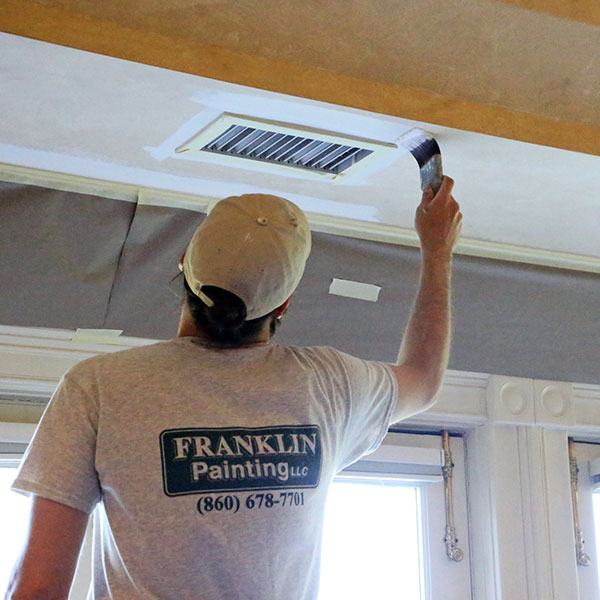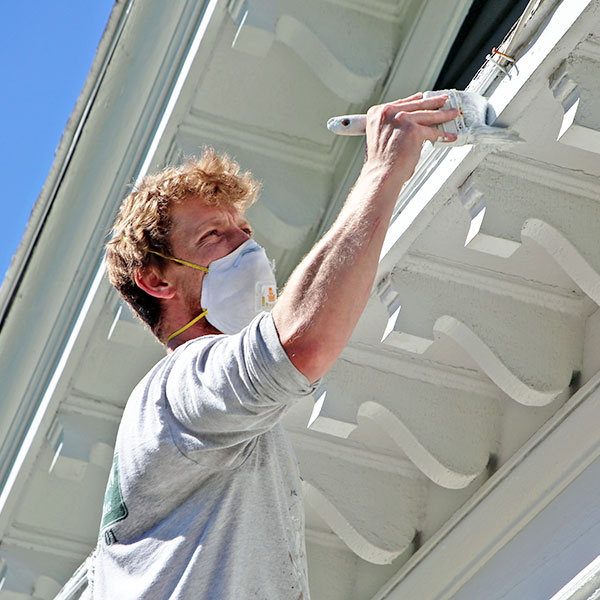
The basic groups of painting and coating types are:
- Primers and interior paints
- Primers and exterior paints
- Wood stains and finishes
- Floor coatings and sealers
- Specialty paints
Interior Coatings and Paints
Among the choices for interior painting are one-coat primers. You can choose a paint that improves stain blocking, durability, ease of cleaning, coverage, and abrasion resistance. Interior paints with antimicrobial additives are also available.
Added tips:
- If you are painting ceilings, flat paint specially formulated for ceilings is the best way to go. Flat finishes hide irregularities and lap marks. No matter what the texture of your ceiling, flat ceiling paint is ideal.
- When painting woodwork, semi-gloss finishes are recommended because they are easy to clean. When wear and tear are minimal, satin and flat finishes are also good choices for painting wood.
- Choose paint with mildew-resistant additive when painting your bathroom. Semi-gloss, glossy, and satin finish interior paints are available with mildew-resistant additives.
Wood Stains
Wood stains are used for new and old wood floors, trim, decks, and more. Stains come in a variety of colors and shades for interior as well as exterior projects. Oil-based finish, polyurethane, and varnish stains bring out the natural colors in the wood. Penetrating stains provide tough, abrasion-resistant surfaces and water resistance.
Floor Coatings and Sealers
Among the coating products for floors are penetrating, clear, water-repellent, and salt-repellent sealers for use on masonry and concrete. Also included in this category are solvent-based acrylic masonry sealers with clear, UV-resistant properties.
 Exterior Paints and Primers
Exterior Paints and Primers
The qualities that exterior paints have in common are generally unnecessary for home interiors. When exterior paints dry, they provide a hard, dense protective shield that stands up against harsh ultraviolet (UV) rays of the sun. Exterior paint is rain resistant and resists both fading and the ill effects of dirt buildup. New finishes for exterior painting have become available in recent years, including, high gloss paint for doors, flat paint for walls, and matte, semi-gloss, eggshell, and satin paints.
Specialty Paints
Specialty paints are used on such surfaces as concrete, aluminum, galvanized steel, ferrous metal, plastic, stucco, wood, plywood, and masonry. The appropriate type of paint depends on the surface type. Examples of specialty paints include acrylic, epoxy, high gloss alkyd, water-reducible alkyd, and urethane products. Others include one-coat primers, low-odor primers and paints, semi-gloss interior, and flat paints.
Note: Latex paint can be directly applied to galvanized and aluminum metals. On properly primed steel and iron, latex or oil-based paints are the best options.

Frank Campanelli, the esteemed founder of Franklin Painting LLC, has been leading the company since 1986. He takes immense pride in the stellar reputation his dedicated team has built by consistently delivering top-notch service to each customer.


